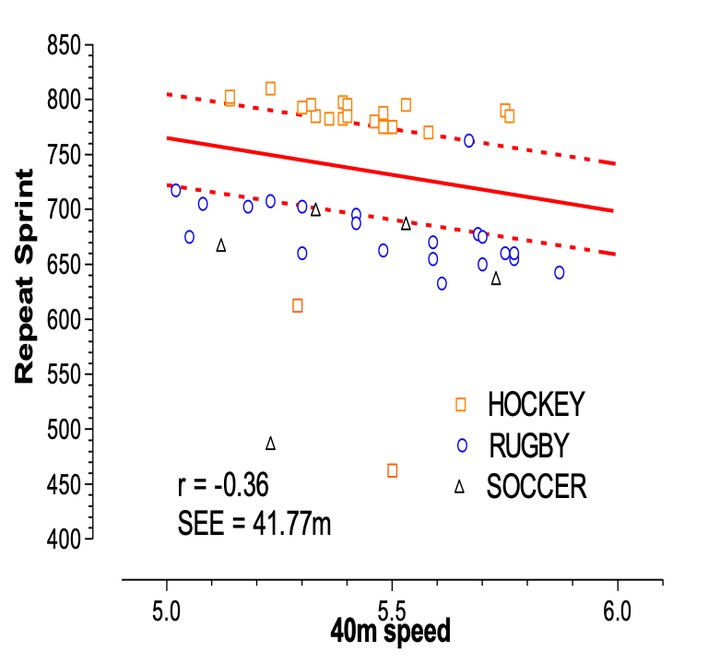Dynamic oscillatory stretching efficacy on hamstring extensibility and stretch tolerance; a randomized controlled trial
 #
#
Abstract
The 5-m repeat-sprint test (5-m RST) measures resistance to fatigue after repeated bouts of short-duration, high-intensity activity. This study determined the components of fitness associated with performance in 5-m RSTs. Speed (10-m and 40-m sprints), strength (bench press), agility, strength endurance (pull-ups and push-ups), and aerobic power (20-m shuttle-run test) were measured in male provincial- or national-level rugby (n = 110), hockey (n = 59), and soccer (n = 55) players. Subjects with either high (HI) or low (LO) resistance to fatigue in the 5-m RST differed in body mass (76.9 ± 11.6 kg vs 102.1 ± 18.9 kg, HI vs LO, respectively, P < .001), agility (14.55 ± 0.41 seconds vs 15.56 ± 0.30 seconds, P < .001), bench press (86 ± 20 kg vs 114 ± 33 kg, P = .03), pull-ups (13 ± 4 vs 8 ± 5, P = .02), push-ups (56 ± 12 vs 39 ± 13, P = .002), and 20-m shuttle-run test (20-m SRT; 133 ± 11 vs 87 ± 12 shuttles, P < .001). Body mass, strength, and aerobic power were the best predictors of 5-m RST performance: 5-m RST = -1.274(mass) + 0.756(1RM bench press) + 2.053(number of 20-m SRT shuttles) + 549.409 (R2 = .66). Performance in the 5-m RST is predicted best by a combination of factors including body mass, strength, and aerobic ability, rather than by any single component of fitness.